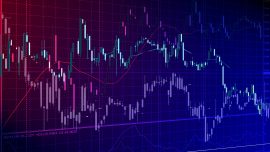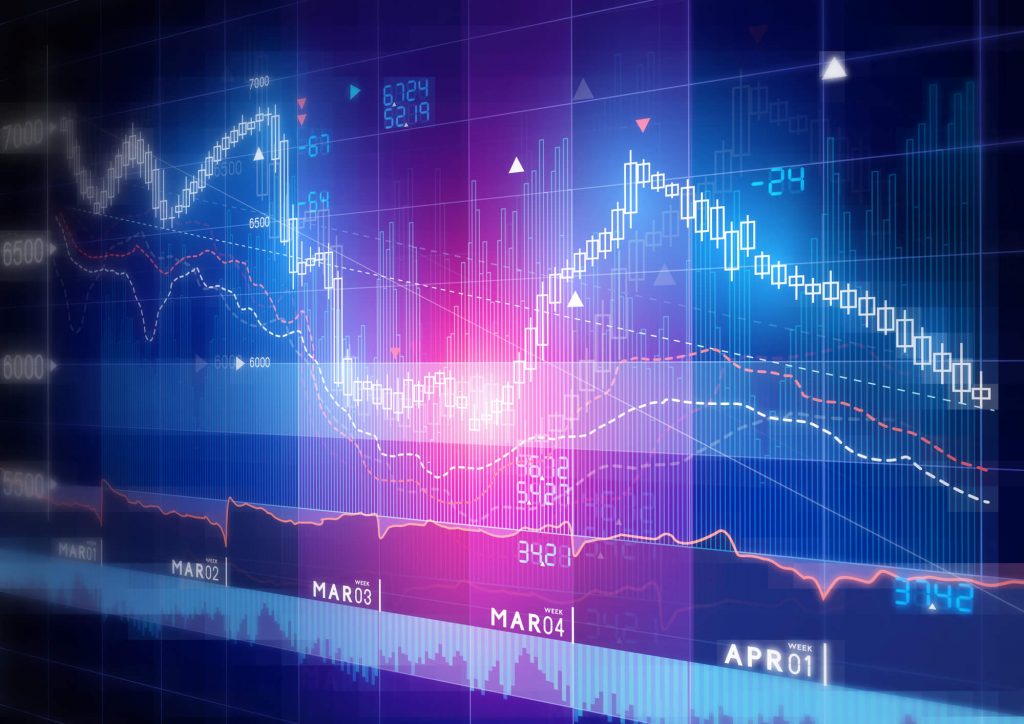
Stock market investors all have different goals. Some seek to earn at least a sizable chunk of income from their Wall Street investments. Others look to profit through capital gains by selling assets quickly and often.
But most everyday folks — those who aren’t stockbrokers, day traders, or mutual fund managers — seek stocks that will churn out a dependable, steady revenue stream, from businesses that won’t go under at less than a moment’s notice.
Strictly speaking, no stock is absolutely guaranteed to be consistently profitable. But some stocks come close. They’re issued by companies who have produced dependable gains over a significant amount of time. They’ve withstood the ups and downs of the stock market as a whole and momentary decreases in their own fortunes. They have strong fundamentals that come close to ensuring predictability and continued profits.

What is the safest type of trading for the long term?
Many Americans get their first exposure to the investment market via an employer-sponsored retirement plan, like an IRA. Such accounts are the safest investment vehicles in the market since they’re heavily regulated, tax-deferred, and insured by the FDIC. IRAs also serve as springboards to other kinds of investments, giving investors a solid bedrock for achieving long-term financial aims.
Playing the stock market, on the other hand, entails a certain level of risk every day. As an investor, you need to determine how much risk you can tolerate. We’ll investigate stock strategies that offer the most reliable returns at the lowest risk.
Expectations of a safe stock
When we talk about what stock investment strategies are the “safest,” it’s important to point out that phrase is not the same as “most profitable” — or, that is, “most instantly profitable.”
A safe stock generates modest but consistent returns and is expected to do so over a long time. The idea behind a safe stock is that one can invest in it and expect to see its profits increase with little chance of it bottoming out (and not much day-to-day management).
What kind of company is considered a “safe” stock? One that has solid financial backing has dictated its marketplace for many years, makes or sells products or services customers need even in economic downturns, and has held its own during volatile times in the marketplace. When the economy begins to recover after a long recession, these companies are usually the first to rebound. Such stocks are called “blue chip” stocks.
Procter & Gamble is an example of a stock that’s been safe for decades. The company makes products that people are always going to need: detergent, paper towels, toilet paper, razors, deodorant, and so forth. They’ve paid out dividends consistently for more than half a century. Should Procter & Gamble experience a downturn, it will most likely be part of an overall dip affecting the entire stock market, not just them. P&G has the underlying resources to weather such a storm and ultimately come out ahead.
Will Procter & Gamble ever experience a sudden jump in profits that explodes its stock price? Probably not. It’s difficult to get excited about P&G, and that’s why it’s safer. P&G stockholders who stick with the company will likely see consistent and dependable growth for as long as they maintain their investment. With reasonable oversight and management, their chances of losing money can be very slim.
Other examples of companies with long-term stock market stability and steady growth include Berkshire Hathaway, Apple, Starbucks, and Pfizer. Since the internet boom arrived, Amazon and Alphabet (the company that owns Google) have established themselves as vital services that will always be in demand.
Companies that experience sudden and dramatic profits are relatively rare and usually hard for a novice investor to detect. These companies are often volatile. Some savvy investors can profit from such stocks if they’re able to turn around and sell them quickly. But they’re by no means “safe.”
Even with “safe” investments, a key determinant to portfolio success is patience. The investor’s ability to weather temporary storms and keep a broader view of the market in mind is just as important as making good buying decisions.

Dividend stocks
A solid, but not 100% foolproof, the measure of a safe stock is whether the company issues dividends. Stock dividends are paid out to shareholders — usually in the form of additional stock, but sometimes cash — as a kind of “reward” for their continued investment and the company’s resultant success.
Dividend payouts are not counted against the company’s overall value, although they can result in a temporary dip in its per-unit stock price. They’re good bellwethers for safe stocks simply because they imply the company’s financial shape is strong enough that they can issue regular payouts, and their continuing to do so means their growth is sustainable year after year.
Most of the companies that pay dividends to stockholders are obvious examples of “safe” stocks: Johnson & Johnson, AT&T, McDonald’s, Coca-Cola, Bristol-Myers Squibb, and so forth. They have long track records of consistent growth and often market dominance. Dividend-issuing companies are the foundation of many conservative, “safe” portfolios.
Portfolio diversity
One tip a responsible stock advisor will always give their clients is to own shares in a variety of stocks or bonds, rather than just one, or even just a few. Diversification also means investing in many different business sectors, rather than exclusively focusing on solely on tech, consumer goods, healthcare, or another single type.
Diversification is sort of a built-in defense against market volatility. If you own stock in just one company, you’re subject to that one company’s overall success — as well as its potential failure. Think of how unfortunate you’d be if the only stock you owned in the ’90s and ’00s was Blockbuster Video, a company that once seemed indomitable until streaming and online services exploded and vaporized its value.
With a diverse portfolio of several companies across a variety of business sectors, you stand a better chance of withstanding an unpredictable loss or bear market. Your profitable stocks are likelier to offset the losses you may experience in more erratic ones.
Entire sectors can go through market drops as well. The tech sector, for example, fell into a sudden recession after the dot-com bust in 2001 and 2002. If your investment portfolio only contained tech stocks at that time, you may have experienced catastrophic losses. But if you also held positions in consumer goods, energy, industrial, healthcare, or other sectors in addition to tech, your overall losses were probably less severe.
Mutual funds, index funds, and ETF’s
Mutual funds are ways to diversify one’s portfolio without too much effort. A mutual fund is an investment pool that holds several different securities like stocks or bonds. Many mutual funds maintain positions in 100 different securities, and some of the most popular invest in 500 or even more. They’re actively run by managers whose full-time jobs are to decide which stocks to buy and which to unload.
That ongoing oversight is why most mutual funds are usually safe investments, although they’re not all created equal. Some mutual funds are run very aggressively in search of immediate profits and capital gains and are therefore very high-risk. The safest mutual funds generate consistent returns on investment without too much turnover.
Mutual funds typically require a sizable up-front investment and usually entail a modest percentage (called an expense ratio) of processing fees. One can only buy shares in a mutual fund once a day after the stock exchange has closed. This is primarily to control money managers’ responses to wild stock market fluctuations during the day. That speaks to the overall safety and volatility avoidance of most mutual funds.
Two other money market structures are similar to mutual funds. Index funds are organized to imitate the diverse composition of the stock market. For example, an index fund may invest in the top 500 stocks on the S&P index. Exchange-traded funds (ETFs) are investment pools that are traded like normal stocks; you can buy them anytime the market is open, rather than waiting to buy them after-hours like mutual funds. Index and exchange-traded funds are usually managed passively, which means they don’t cost as much to run as mutual funds. However, that also means they’re not as safe.

How is a safe stock portfolio beneficial?
Safe stocks represent security. They’re issued from companies who have experienced perceptible growth over long histories, successfully navigate market volatility, and don’t lose their investors’ money. Their cash reserves are solid, and their debt levels are low. In short, they meet their expectations and rarely disappoint.
That kind of security is especially meaningful to retirees, who need a steady financial base they can draw upon without having to adjust their portfolio contents. But anyone with a long-term view of greater financial goals — college tuition, or just a partial fixed income — can reap the benefits of safe stock trading as part of their investment strategy.
Gorilla Trading helps everyday investors make the right stock decisions, whatever their investment plans may be. Find out more by contacting us online.
